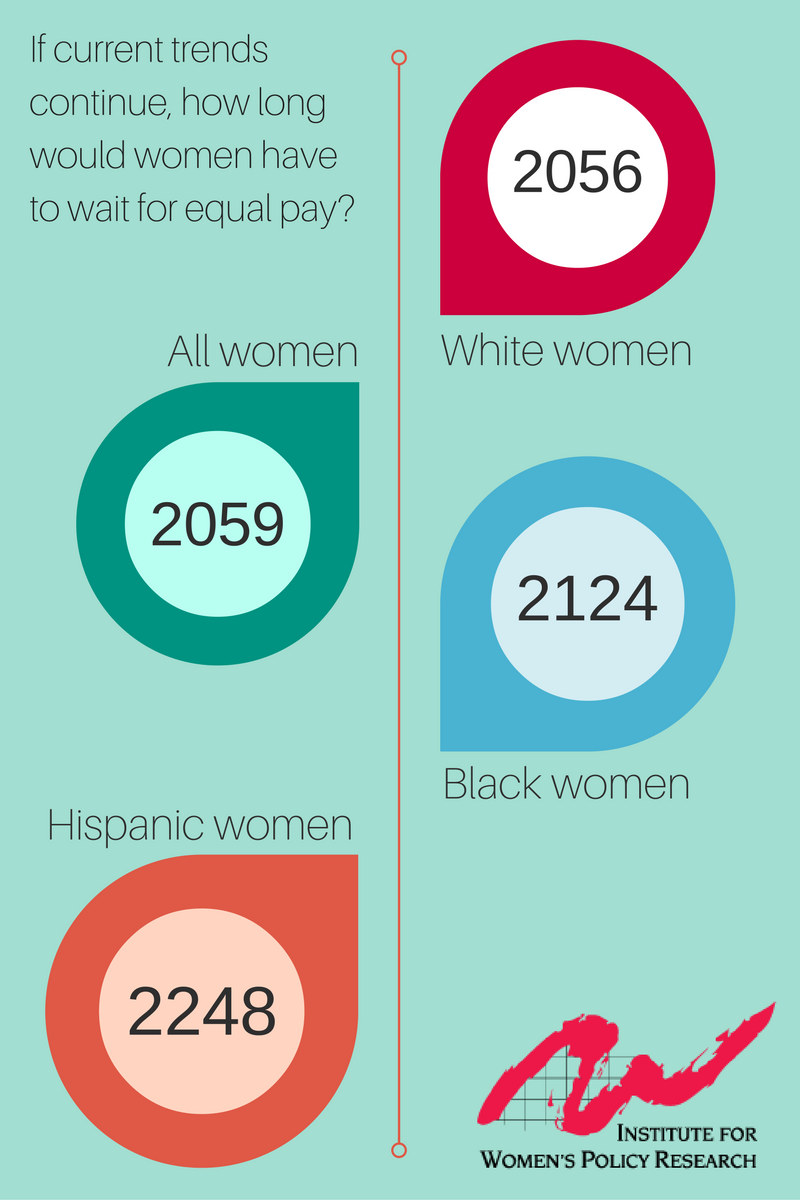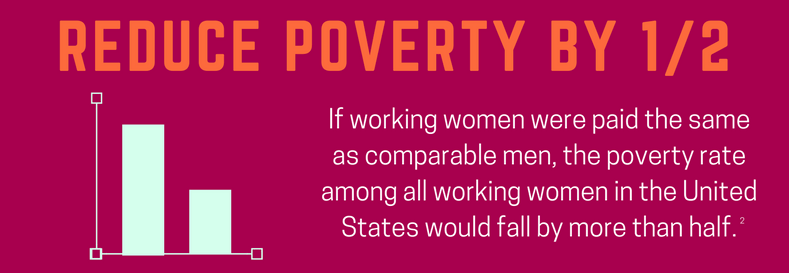5 Facts about Women and the Economy in Advance of the ‘Day without Women’
On March 8th, International Women’s Day, organizers of the “Day Without Women” are set to participate in a general strike with the intention of minimizing economic activity by women. It’s uncertain as to how large the strike will be or who will participate.
Just how much do women contribute to the economy? Nearly 75 million women over the age of 18 work in the United States. Taken together, working adult women earn $2.8 trillion in a single year, not counting the value of their unpaid work at home.
Here are five other things you need to know about women and the economy in advance of International Women’s Day.
- Hispanic Women Will Wait 232 Years for Equal Pay, If Current Trends Continue.
IWPR analysis has found that women overall will not see equal pay until 2059, but projections by race and ethnicity find that women of color have much longer to wait until pay equity. The exceptionally slow pace of progress for Hispanic women is nearly two centuries behind when White women should expect to see equal pay with White men (2056). Black women are not projected see equal pay until 2124.
>> Read IWPR’s Resources on Pay Equity & Discrimination, including Five Ways to Win an Argument about the Gender Wage Gap, our fact sheet that clarifies the most common myths about gender wage gap statistics.

- Equal pay would cut poverty by more than half for working women and grow the U.S. economy.
Persistent earnings inequality for working women translates into lower lifetime pay for women, less income for families, and higher rates of poverty across the United States. In each state in the country, women experience lower earnings and higher poverty rates than men. The economic impact of this persistent pay inequality is far-reaching: if women in the United States received equal pay with comparable men, poverty for working women would be reduced by half and the U.S. economy would have added $482 billion (equivalent to 2.8 percent of 2014 GDP) to its economy.
- Job Segregation keeps 1 in 4 working women in traditional care, serving, and cleaning roles with lowest pay.
Undervalued and Underpaid in America, a recent study by IWPR and Oxfam America finds that workers in growing, low-wage, female-dominated jobs—who are disproportionately women of color—earn less than men working in similar jobs. For instance, maids and housekeepers, who earn $9.94 per hour, are 90 percent female, while janitors, who are mostly men, earn 22 percent more, at $12.13 per hour.
“Millions of women work in jobs that are seen as “women’s work” and are in fact done disproportionately by women, such as teaching young children, cleaning, serving and caring for elders — essential jobs that, despite requiring physical skill, emotional labor and often, postsecondary education, offer workers low wages and scant benefits.” – IWPR’s Barbara Gault and Oxfam America’s Mary Babic wrote in an op-ed on the findings for PBS NewsHour, “The Economy Undervalues Women’s Work and That Needs to Change.”
>>Read: IWPR Program Director on Employment & Earnings Ariane Hegewisch answered some frequently asked questions on the wage gap for Oxfam America’s blog, “Why DO women earn less than men? And other vexing questions.” (A great resource for how to respond to common questions from a wage gap skeptic!)
- Women account for only 1 in 3 workers in good, growing, middle-skill occupations.
Improving women’s access to good middle-skill jobs can help close the wage gap and improve women’s economic security, while also filling reported skills shortages. IWPR’s analysis of more than 400 occupations finds that many women work in jobs that already have a similar skill profile to better paying, male-dominated jobs in manufacturing, information technology, and transportation—jobs that employers report are facing skills shortages.
For example, library assistants—8 in 10 of whom are women—get paid almost $24,000 less per year than IT support specialists, nearly 3 in 4 of whom are men. Based on the analysis, these two occupations share many similar characteristics, and with some additional training and education, library assistants could become IT support specialists, improving their own earnings and filling growing demand for IT workers.
>>Read: IWPR’s Heidi Hartmann and JP Morgan Chase’s Chauncy Lennon delve into what the findings mean for closing the gender and skills gap in an op-ed for U.S. News & World Report.
- A national paid leave policy could help young working mothers, a group least likely to have access to leave
A research series from IWPR and IMPAQ International finds that a national paid leave policy would benefit working women, younger workers, and workers of color and, depending on the policy alternative enacted, cost less than half of one percent of payroll. About half (50.5 percent) of young mothers are not eligible for unpaid, job-protected leave under FMLA. Yet, first-time mothers who utilized paid leave were 26 percent less likely to quit their jobs and were 18 percent more likely to work for the same employer after the birth of their first child.
Another IWPR report finds a growing body of research suggesting that paid family leave increases labor market attachment, economic security, and the health and welfare of families and children, and has the potential to help businesses thrive, reduce spending on public benefits programs, and promote economic growth and competitiveness. Paid leave is a win-win-win: good for the employee, good for the employer, and good for the economy.
“As Congress and the new President search for a real fiscal stimulus with long-term payoffs, they should look no further than fighting for equal pay for women and investing in paid family leave and quality, affordable child care.” – IWPR’s Heidi Hartmann and Congresswoman Carolyn Maloney of New York wrote in an op-ed for TIME, “Pay Women More If You Want a Stronger Economy.”
To view more of IWPR’s research, visit IWPR.org




